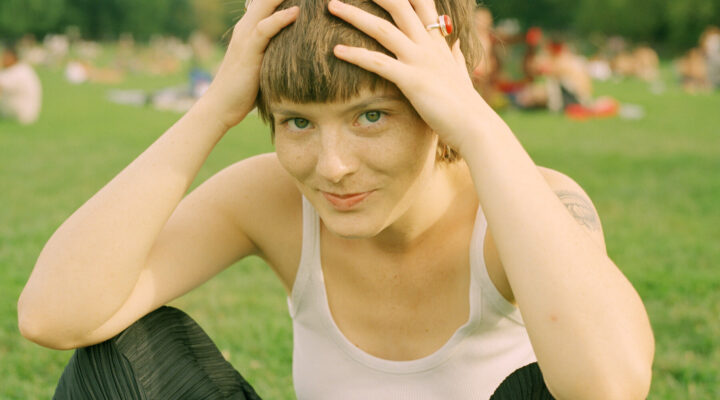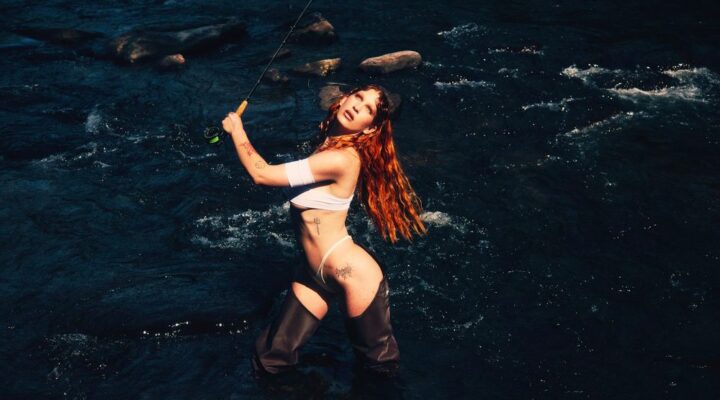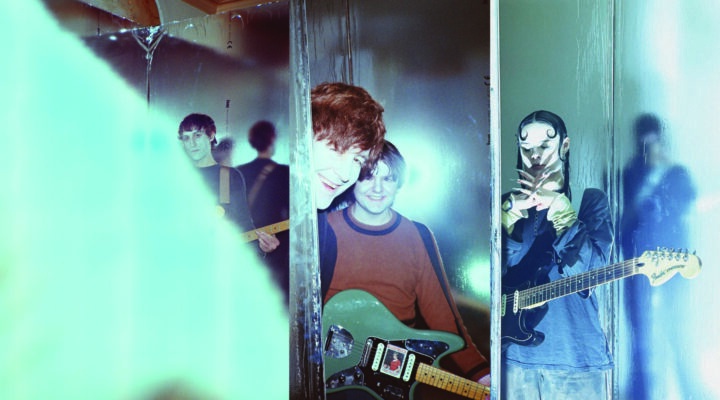Juan Andres Arango
Together with the small passionate crew of La Playa D.C, Juan Andres Arango spent months in the outskirts of Bogotá, infiltrating the community to find the perfect amateur actors; film the streets, clubs and hair salons and do his best to translate the local energy into something visual. The result was La Playa D.C; a film we loved so much, we planned a Skype interview with Juan.
Interview by Roffa Mon Amour’s Charlotte van Zanten
‘I wanted to show what it means to be a teenager in a very hostile environment’
I hear you used to live in the Netherlands and you wrote the script for this film partly in Amsterdam.
‘I lived in Amsterdam for one year when I started working on this project, but I only drew the general storyline over there. After Amsterdam I spent at least two years in Bogotá doing research.’
How long had you been toying with the idea of making a film like La Playa D.C.? Had this story been in your head for a long time?
‘While I was preparing my graduating project I met this Afro Colombian teenager in the streets of Bogotá begging for money. He told me that he’d fled from the Pacific Coast, like so many do. He was only sixteen at the time, and starting to look for his place in the city and his identity and I became close friends with him. I involved his character – the story of this Afro-Colombian teenager – in my graduation project. I was doing a story about three people that live in the same city, Bogotá, but in different parts and different times. Later I started thinking that it would be interesting to make a film about what it means to be a teenager like him, living in the outskirts of Bogotá.’
So the film is actually based on someone you know?
‘It was definitely inspired by this boy, but he also awakened a general interest in immigrant teenagers. I starting talking with many teenagers and the story became a mixture of different elements and different stories.’
Do you see this film as an anthropological research project?
‘Although it took me two years of research to write the script, I didn’t want to portray an accurate impression of this community. I was trying to explore from a more ecstatic and personal point of view: I wanted to show what it means to be a teenager in a very hostile environment.’
How about the hair element?
‘When I was doing the research with the boys I started realizing that hairdressing was extremely important to them. They would spend a lot of their money on creating different hairstyles every Friday before the weekend. They would do very elaborate things that they were very clear about: they knew what they wanted to express on their head and very often it was related to what was happening in the city, what they experienced that week. So beautiful… The hairdressing salons are not only to cut hair, they also have a social function. Salons are meeting point; they are the centers of the community. They are a place to hangout together, to party, to drink and to listen to music.’
Music! I love the music in your film. It is always everywhere.
‘It is great, isn’t it? Music was always everywhere. When they were chilling; washing cars; walking; talking. The group that composed most of the music in the film is Flaco Flow y Melanina. I met them in a hair salon while chilling with the boys and we all became friends. They are a duo coming from the pacific coast, now living in Bogotá and besides rapping and making music they make a living as hairdressers. Most of the music the boys listen to comes from Afro-Colombian groups from the pacific coast living in Bogotá. They usually make a mixture of traditional music with more modern styles, like Flaco Flow y Melanina.’
It seems like you worked a lot with the local environment and people.
‘My mission as a director was to transmit real energy and passion and the energy was right there: why would you create something artificial if it is right in front of you? You remember that scene on the dance floor? It was shot on a Friday night and beside the main characters, everybody was just going out and having fun. They are not extras, they were just dancing there and when we picked up our cameras they didn’t stop doing that: they didn’t care. They loved it! And I absolutely love that about this culture: they are not easily intimidated at all.’
Since you probably didn’t want to make a political or anthropological statement, can I assume you are attracted to the coming of age kinda story?
‘It’s the teenage story that I am attracted too. It is a moment in our lives that we are really open to change, to creating our identity. And when teenagers are also immigrants this change is especially strong. But I have to admit that I hope people watching this film will became more aware and interested in the Afro-Colombian community. This community is so absent in the Colombian media for example, while they are twenty percent of the population. And they have a very unique, particularly strong culture and I really hope this film will trigger some curiosity and discussion.’
Final question: are you working on something new?
‘I am writing the script for my next film. At the moment I’m doing a lot of research and at the same time I’ve started writing the script. It’s called ‘Ex Quinientos’ and it is about three different stories, set in three different places. One of the places is Buenaventura near the Pacific Ocean; one story is set in Mexico City and one in Montreal. For the next couple of years I’ll be visiting these cities doing my research and working on my scripts. Next week I’ll fly to Mexico.’
Will it be about immigrants or other minorities again because of what you said earlier: they are more vulnerable and open to change?
(Laughing) ‘Yeah absolutely! That’s my subject! My films are always very urban and about how people change when they move and about how we look at each other. This story will be about how people from America. And by America I mean the America in the large sense, North-, Mid- and West-America, all of them, look at each other.’
I’m looking forward to seeing it! Good luck doing your research and writing the script and stay safe in Mexico City.
You can see La Playa DC at Roffa Mon Amour Rooftop Cinema festival on 8 August and at Studio/K’s Open Air Cinema on 9 August. There will also be a live Q&A session with Juan Andres Arango following the screening of the film on 8 August.



